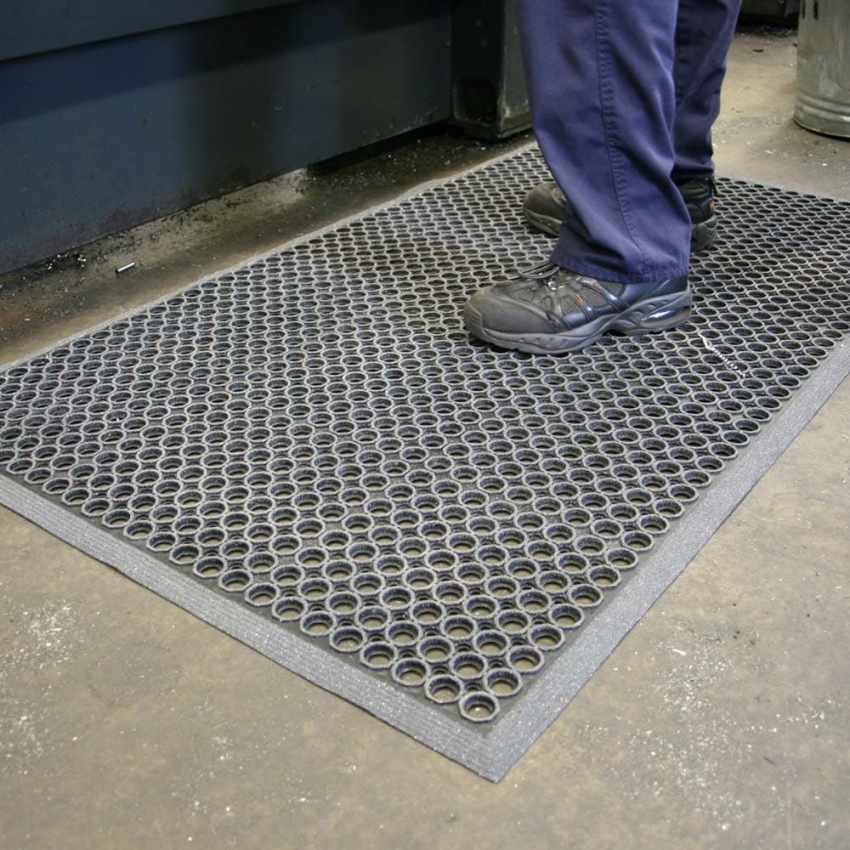













Anti-fatigue and anti-slip this floor covering has excellent resistance to most oily, chemical and greasy products thanks to its material composition.
Its surface is made of silicon carbide, providing exceptional anti-slip properties and limiting lower-limb fatigue caused by working on hard, cold floors. Bevelled edges reduce the risk of slipping, and these mats are also fall-proof. Drainage holes keep the mat surface dry and non-slip.
Ideal for industrial perimeters requiring high resistance, or for high-stress sites such as technical workshops.
Available in standard sizes.
Perforation size: 21 mm
| Tensile strength : | ASTM D412, 5 (±1) Nm/mm_ |
| Elongation : | ASTM D412, 250% (±50%) |
| Application temperature : | 18 °C to 82 °C |
This product is suitable for wet and oily environments.
Ideal for dry areas such as engineering workshops, manufacturing industries - Automotive / Transportation - Distribution centers - Electronics - Food and beverage - Health care - Heavy industry / Metalwork - Hospitality - Light industry - Pharmaceutical.
Free installation.

| HIGH DUTY GRIT |
Data sheet
| Format | Mat |
| Design | |
| Properties | Anti-fatigue Non-slip |
| Composition | |
| Thickness | 13 mm |
| Weight | |
| Resistant to chemicals | Yes |
| Environment | Oily environments Wetlands |
| Intensity of use | Intense |
| Wear index | 3/3 (Excellent) |
| Anti-slip classification | R13 |
Industrial mats meet the needs of ergonomic workstations and employee well-being.
They prevent:
There are many uses for industrial mats:
Safety criteria: The mat must cover the entire workstation, be firmly attached to the floor, not shift or slide, and have bevelled edges to prevent falls.
Thickness and flexibility criteria: Contrary to what you might think, you shouldn't choose a very thick or very soft mat. The mat should have a certain elasticity, but still allow a comfortable standing position, without the user feeling slumped.
Environmental criteria :
Environmental hazard criteria : To establish more precise characteristics for a mat (antistatic properties or fire resistance etc...) we need to take into account the hazards present in the environment where the mat will be installed.
Where hazardous liquids are present in the working environment, the anti-slip properties and chemical resistance of industrial mats should be taken into account. The presence of openings on mats to allow the evacuation of fluids is essential.
Traffic criteria: We need to take into account the traffic that takes place on the equipment: how many workers can walk on it? How often, etc., in order to choose the most suitable mat.
Prevent the many problems associated with poor workstation ergonomics: RSI, static shock, bacterial proliferation, etc.
We offer a wide choice of industrial mats: on rolls, in standard sizes, made-to-measure or modular mats to suit all types of workstations.
Grating is a square slab of metal, polyester, rubber or PVC, made up of several parallel slats. The slats come in a variety of sizes, species and colors, and are grooved to prevent water from stagnating and the floor from becoming slippery.
Polyester gratings: Food industry - Paper and cellulose industry - Pharmaceutical industry - Plastics industry - Fiber and textile industry - Automotive and aircraft construction - Offshore installation - Sewage treatment plant - Navy and shipbuilding - Transport - Pickling and galvanizing plant.
Rubber gratings: Can be used in a wide range of applications: building entrances, walkways, stairs, access paths, production lines, ski resorts, etc.
Hygienic gratings: swimming pools - changing rooms - saunas - hotels - kitchens - steam rooms, etc.
Metal gratings: Thermal, hydroelectric, nuclear and solar power plants - Chemical and oil industries - Automotive and steel industries - Shipbuilding - Cement works - Metal processing and construction - Railways and transport